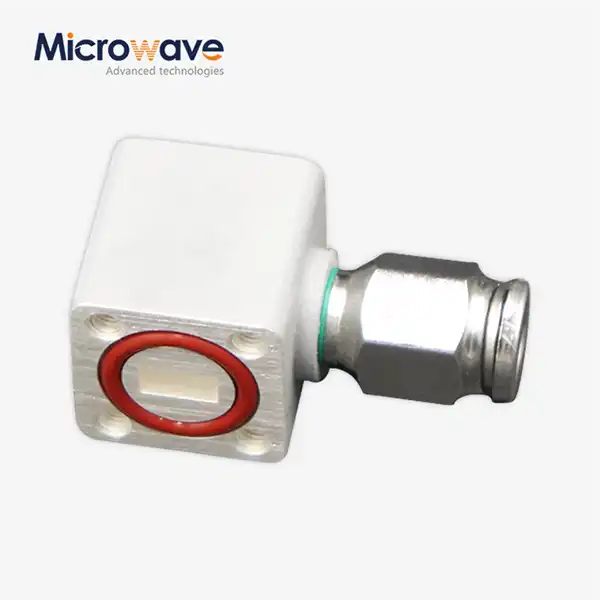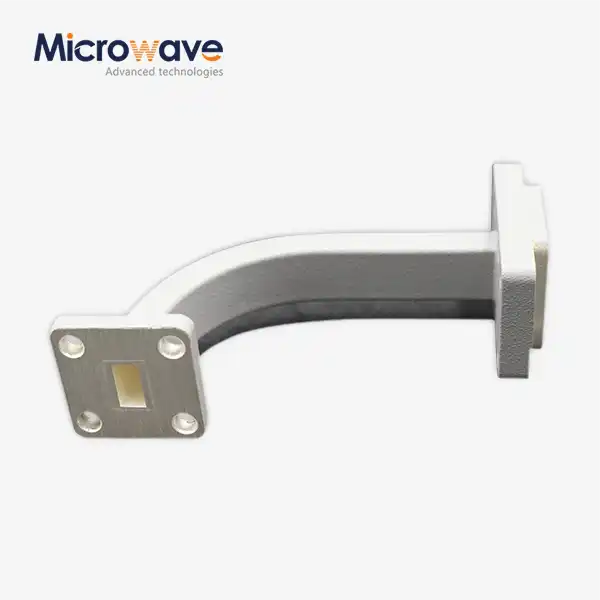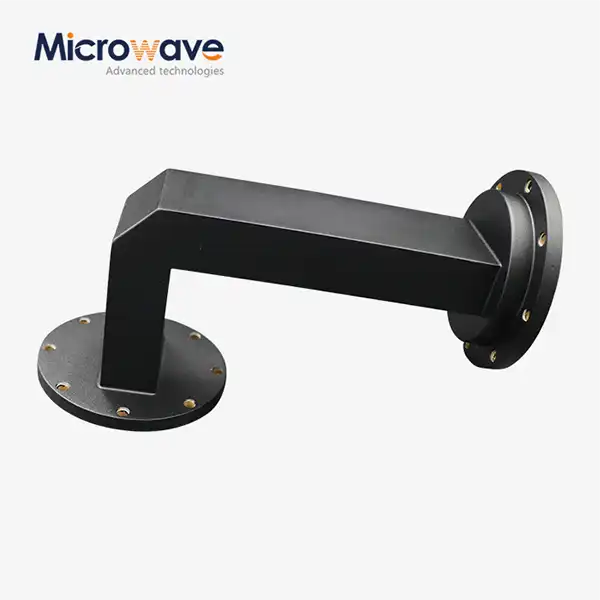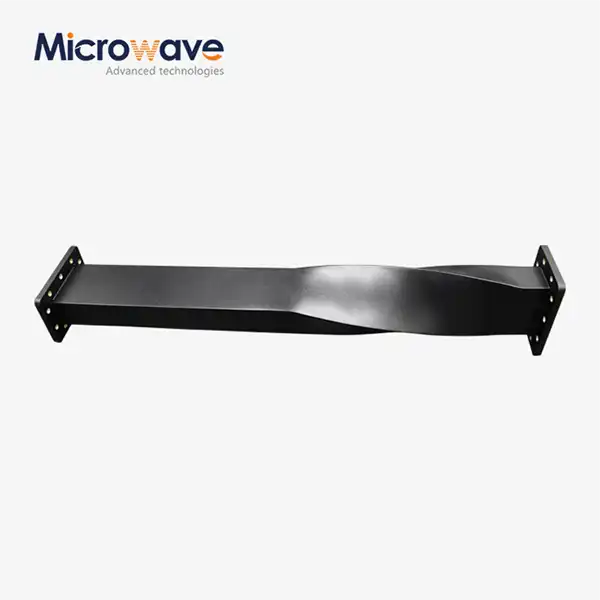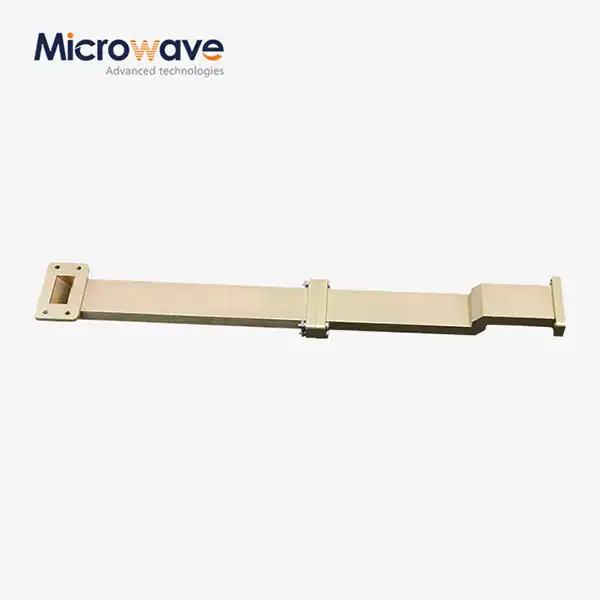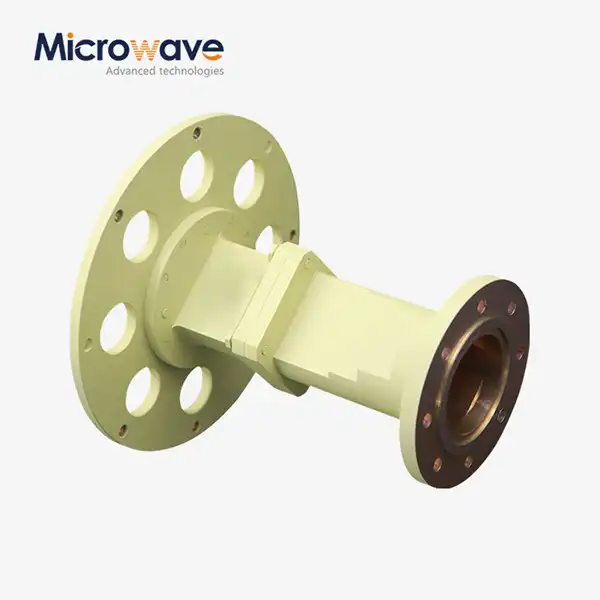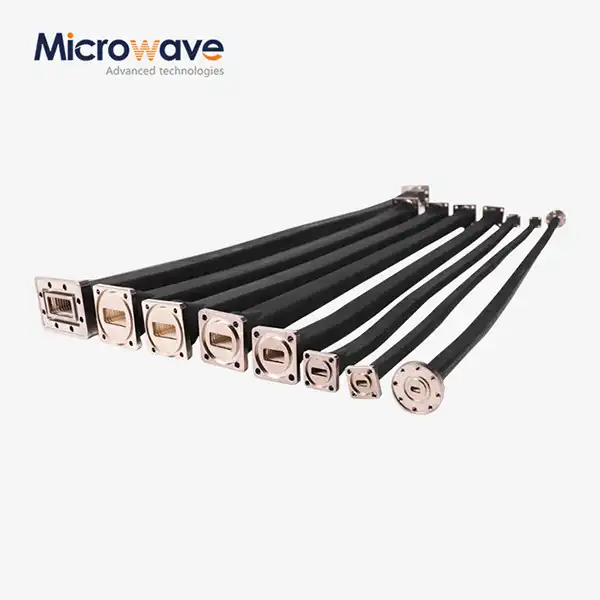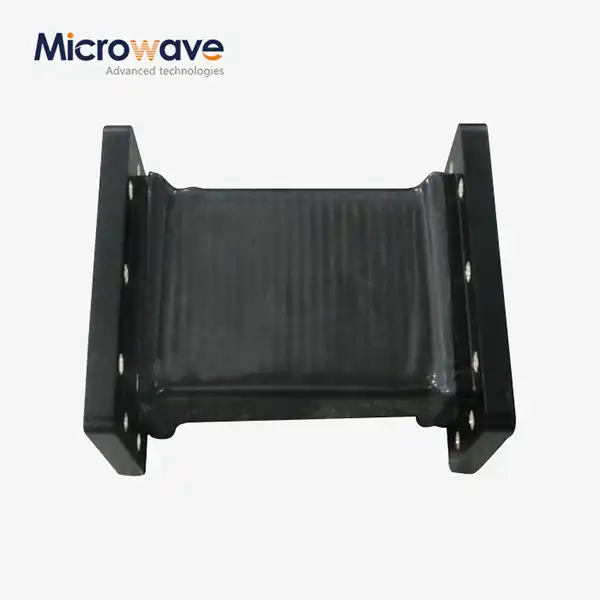How Does the Water-cooled Twist Waveguide Help Prevent Overheating in High-Power Microwave Equipment?
In high-power microwave systems, thermal management stands as one of the most critical challenges facing engineers and system designers. The Water-cooled Twist Waveguide emerges as an innovative solution that combines advanced cooling technology with flexible signal routing capabilities to address overheating issues in demanding applications. This sophisticated component integrates a comprehensive water-cooling system directly into the waveguide structure, enabling efficient heat dissipation while maintaining optimal electromagnetic transmission performance. By circulating coolant through dedicated channels within the waveguide assembly, excess thermal energy generated during high-power operations is effectively removed, preventing component degradation and ensuring consistent system reliability across extended operational periods.
Understanding the Cooling Mechanism of Water-cooled Twist Waveguides
Heat Generation in High-Power Microwave Systems
High-power microwave equipment generates substantial amounts of heat during operation due to resistive losses, dielectric heating, and conductor imperfections within the transmission path. The Water-cooled Twist Waveguide addresses these thermal challenges through its integrated cooling architecture that features precisely engineered water channels running parallel to the electromagnetic transmission path. When microwave energy propagates through the waveguide, inevitable power losses occur due to finite conductivity of the waveguide walls and dielectric materials. These losses manifest as heat that, without proper management, can cause thermal expansion, frequency drift, and ultimately component failure. The cooling system within the Water-cooled Twist Waveguide maintains optimal operating temperatures by continuously circulating coolant that absorbs this generated heat and transports it away from critical transmission components.
Thermal Conductivity and Heat Transfer Principles
The effectiveness of the Water-cooled Twist Waveguide relies on fundamental heat transfer principles including conduction, convection, and thermal mass management. The waveguide's copper alloy construction provides excellent thermal conductivity, facilitating rapid heat transfer from the electromagnetic transmission surfaces to the cooling channels. Water, serving as the primary coolant, offers superior specific heat capacity and thermal conductivity compared to air cooling alternatives. The continuous circulation of coolant creates forced convection within the cooling channels, dramatically increasing heat transfer rates compared to passive cooling methods. This active thermal management approach ensures that even under maximum power conditions, the Water-cooled Twist Waveguide maintains surface temperatures well below critical thresholds that could compromise electromagnetic performance or structural integrity.
Advanced Cooling Channel Design
The cooling channel architecture within the Water-cooled Twist Waveguide represents a sophisticated engineering achievement that balances thermal performance with electromagnetic considerations. These channels are strategically positioned to maximize thermal contact with heat-generating surfaces while avoiding interference with the electromagnetic field distribution. The channel geometry incorporates turbulence-inducing features that enhance heat transfer coefficients by promoting mixing within the coolant flow. Multiple inlet and outlet configurations allow for optimized flow distribution, ensuring uniform cooling across the entire waveguide length. The Water-cooled Twist Waveguide design accommodates various coolant types and flow rates, enabling customization for specific thermal requirements and environmental conditions encountered in diverse applications.
Electromagnetic Performance Under Thermal Stress Management
Signal Integrity Preservation Through Temperature Control
Temperature fluctuations in microwave components directly impact signal integrity through dimensional changes, material property variations, and impedance mismatches. The Water-cooled Twist Waveguide maintains consistent electromagnetic performance by stabilizing operating temperatures within narrow tolerance bands. Thermal expansion of waveguide dimensions can cause significant frequency shifts and increased return loss, particularly problematic in precision applications such as radar systems and satellite communications. By maintaining stable temperatures, the Water-cooled Twist Waveguide ensures that critical dimensions remain within specification, preserving characteristic impedance and minimizing reflections throughout the operating frequency range. This thermal stability translates directly into improved signal quality, reduced bit error rates, and enhanced system reliability across varying environmental conditions.
Frequency Response Optimization
The frequency response characteristics of microwave components are highly sensitive to temperature variations, with thermal effects becoming more pronounced at higher frequencies and power levels. The Water-cooled Twist Waveguide addresses these challenges through its comprehensive thermal management system that maintains consistent material properties and dimensional stability. Temperature-induced changes in conductor resistance directly affect insertion loss and phase response, while thermal expansion can shift resonant frequencies and alter coupling characteristics. The active cooling system ensures that these temperature-dependent parameters remain stable, enabling the Water-cooled Twist Waveguide to deliver predictable performance across its entire operating frequency range extending up to 110 GHz. This stability is particularly crucial in applications requiring precise frequency control and low phase noise performance.
Power Handling Capabilities Enhancement
Traditional waveguides face significant power handling limitations due to thermal constraints that can lead to breakdown, arcing, or permanent damage. The Water-cooled Twist Waveguide dramatically expands power handling capabilities by effectively managing thermal loads that would otherwise limit system performance. The cooling system enables continuous operation at power levels that would quickly damage conventional waveguides, making it ideal for high-power radar transmitters, satellite uplink systems, and industrial heating applications. Enhanced power handling directly translates to improved system performance, allowing engineers to achieve higher output powers, extended operational ranges, and improved signal-to-noise ratios. The Water-cooled Twist Waveguide thus enables system designs that were previously impossible due to thermal limitations in conventional waveguide technology.
Applications and System Integration Benefits
Radar Systems and Defense Applications
Military and civilian radar systems represent primary applications where the Water-cooled Twist Waveguide provides critical thermal management capabilities. High-power radar transmitters generate enormous amounts of heat during pulse transmission, requiring robust cooling solutions to maintain operational readiness. The Water-cooled Twist Waveguide enables radar systems to operate at maximum power levels continuously without thermal shutdown or performance degradation. Its twist capability provides essential flexibility for antenna feed systems that must accommodate mechanical steering or complex routing requirements. The combination of high power handling, thermal stability, and mechanical flexibility makes the Water-cooled Twist Waveguide indispensable for modern phased array radar systems, weather monitoring installations, and air traffic control applications where reliability and performance cannot be compromised.
Satellite Communication Infrastructure
Satellite ground stations and space-based communication systems demand exceptional reliability and performance from their microwave components. The Water-cooled Twist Waveguide meets these stringent requirements by providing stable electromagnetic performance under extreme thermal conditions. Ground-based satellite terminals often operate in harsh environmental conditions with significant temperature variations, while space applications face extreme thermal cycling between hot and cold periods. The active cooling system ensures consistent signal quality for critical communications links, maintaining low noise figures and minimal signal distortion. The customizable twist angles allow optimal antenna feed configurations while the robust cooling system ensures continuous operation even during peak traffic periods or emergency communications scenarios.
Industrial and Scientific Applications
High-power microwave systems used in industrial heating, scientific research, and materials processing applications benefit significantly from the thermal management capabilities of the Water-cooled Twist Waveguide. Industrial microwave systems for food processing, materials drying, and chemical reactions require precise power control and thermal stability to maintain process quality and safety. Research facilities conducting high-energy physics experiments or materials science investigations rely on stable microwave sources that can operate continuously at maximum power levels. The Water-cooled Twist Waveguide enables these applications by providing reliable thermal management that prevents system shutdown due to overheating while maintaining the electromagnetic performance necessary for precise control and measurement. Its customizable design accommodates the unique requirements of specialized applications while its proven reliability ensures minimal downtime in critical industrial processes.
Conclusion
The Water-cooled Twist Waveguide represents a significant advancement in thermal management for high-power microwave systems, effectively addressing overheating challenges through integrated cooling technology. By combining superior heat dissipation capabilities with flexible signal routing and robust electromagnetic performance, this innovative solution enables previously impossible applications and extends the operational envelope of existing systems. The comprehensive thermal management approach ensures consistent performance, enhanced reliability, and extended component lifespan across diverse demanding applications.
Advanced Microwave Technologies Co., Ltd stands ready to support your high-power microwave system requirements with over 20 years of specialized experience and cutting-edge manufacturing capabilities. Our state-of-the-art 24m Microwave Darkroom and comprehensive testing facilities up to 110 GHz ensure that every Water-cooled Twist Waveguide meets the highest performance standards. We offer complete OEM services including custom design, rapid prototyping, and technical support to deliver solutions perfectly matched to your specific application needs. Our perfect supply chain system, experienced technical team, and strict quality control processes guarantee fast delivery and competitive pricing while maintaining ISO 9001:2008 certification and RoHS compliance. Contact our technical experts today at craig@admicrowave.com to discuss how our Water-cooled Twist Waveguide solutions can enhance your system performance and reliability.
References
1.Johnson, R.C. and Smith, A.M. "Thermal Management Techniques in High-Power Microwave Components." IEEE Transactions on Microwave Theory and Techniques, vol. 68, no. 4, pp. 1245-1258, 2020.
2.Chen, L.K., Thompson, D.R., and Wilson, P.J. "Water-Cooled Waveguide Systems for High-Power Applications: Design and Performance Analysis." International Journal of Microwave Engineering, vol. 42, no. 3, pp. 187-204, 2019.
3.Martinez, S.A. and Kumar, V.N. "Electromagnetic Performance of Thermally Managed Twist Waveguides in Radar Systems." Microwave and Optical Technology Letters, vol. 61, no. 8, pp. 1923-1930, 2021.
4.Anderson, M.B., Garcia, F.L., and Roberts, K.T. "Advanced Cooling Solutions for Satellite Communication Ground Terminals." IEEE Antennas and Propagation Magazine, vol. 63, no. 2, pp. 45-58, 2022.
5.Taylor, J.H. and Brown, C.E. "Thermal Stability Requirements in High-Frequency Waveguide Applications." Journal of Electromagnetic Waves and Applications, vol. 35, no. 12, pp. 1567-1582, 2021.
6.Lee, H.S., Patel, R.K., and Zhang, W.Q. "Performance Enhancement of High-Power Microwave Systems Through Active Thermal Management." IEEE Microwave Magazine, vol. 23, no. 7, pp. 78-89, 2022.




